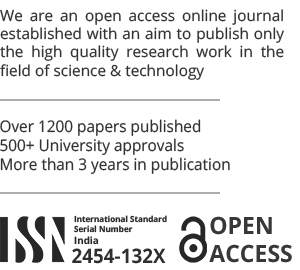This paper is published in Volume-10, Issue-6, 2025
Area
COMPUTER ENGINEERING
Author
Jesu Vimal Austin R
Org/Univ
St. Joseph's College of Engineering, Chennai, Tamil Nadu, India
Keywords
YOLOv8, Convolution Neural Network, Fire/Smoke, Detection, Vendor Alert System
Citations
IEEE
Jesu Vimal Austin R. Real-Time Fire Detection and Automated Vendor Alert System, International Journal of Advance Research, Ideas and Innovations in Technology, www.IJARIIT.com.
APA
Jesu Vimal Austin R (2025). Real-Time Fire Detection and Automated Vendor Alert System. International Journal of Advance Research, Ideas and Innovations in Technology, 10(6) www.IJARIIT.com.
MLA
Jesu Vimal Austin R. "Real-Time Fire Detection and Automated Vendor Alert System." International Journal of Advance Research, Ideas and Innovations in Technology 10.6 (2025). www.IJARIIT.com.
Jesu Vimal Austin R. Real-Time Fire Detection and Automated Vendor Alert System, International Journal of Advance Research, Ideas and Innovations in Technology, www.IJARIIT.com.
APA
Jesu Vimal Austin R (2025). Real-Time Fire Detection and Automated Vendor Alert System. International Journal of Advance Research, Ideas and Innovations in Technology, 10(6) www.IJARIIT.com.
MLA
Jesu Vimal Austin R. "Real-Time Fire Detection and Automated Vendor Alert System." International Journal of Advance Research, Ideas and Innovations in Technology 10.6 (2025). www.IJARIIT.com.
Abstract
Advancements in artificial intelligence (AI) have significantly improved environmental monitoring and safety measures, particularly in fire detection systems. Early fire detection is critical for minimizing response time and mitigating potential damage. Traditional sensor-based fire detection methods face limitations related to range, environmental conditions, and false alarms. In contrast, deep learning-based object detection models, such as the You Only Look Once (YOLO) architecture, enable accurate and efficient fire detection using video and image data. This study explores the capabilities of the latest YOLO version, YOLOv8, for real-time fire detection. YOLOv8’s lightweight architecture, coupled with its ability to process high-resolution images with minimal latency, makes it a suitable choice for real-world applications. The system detects flame and smoke patterns in video streams or images and provides timely alerts to facilitate faster responses. Key improvements in YOLOv8 include enhanced detection speed, increased accuracy, and reduced computational complexity, making it particularly effective in remote or hard-to-monitor areas such as forests, industrial zones, and residential spaces. The system is trained on a comprehensive dataset encompassing diverse fire scenarios to reduce false positives and improve its ability to differentiate fire from non-fire elements. Expected outcomes include reliable real-time fire detection, scalability across various environments, and robust performance under varying conditions.

